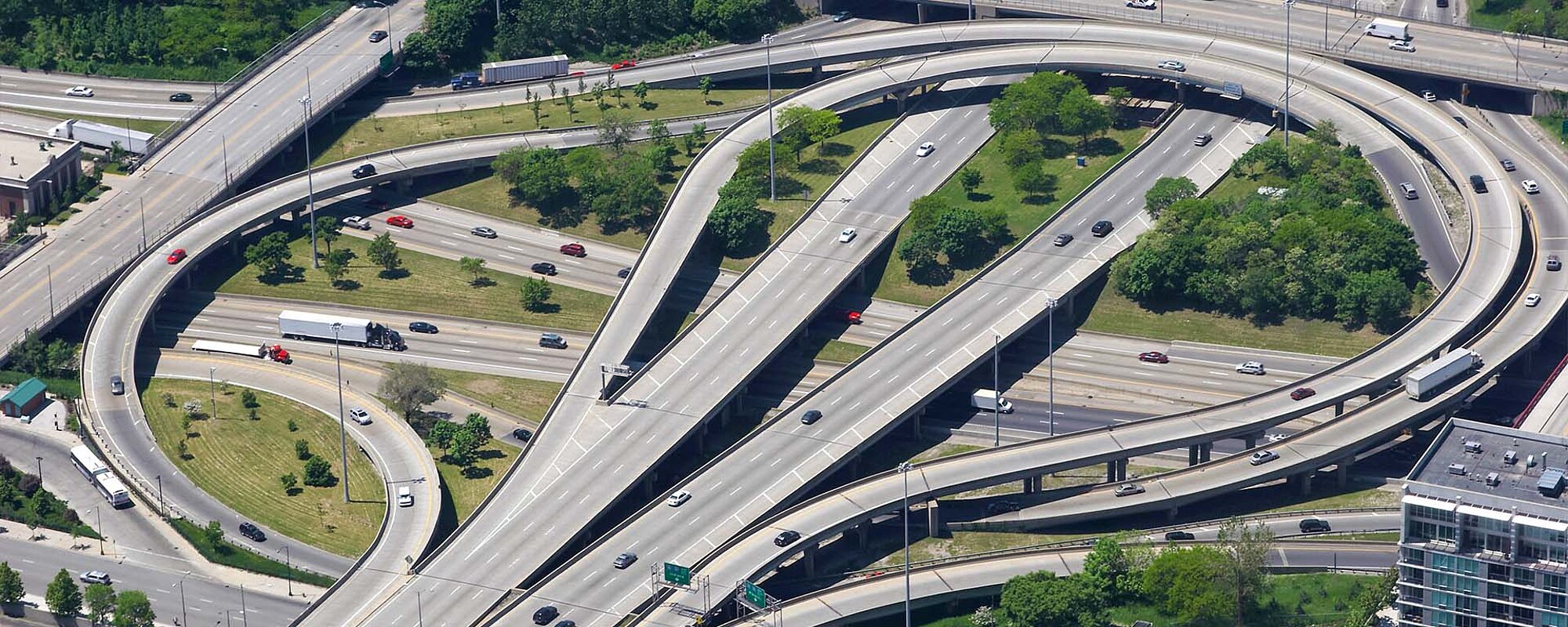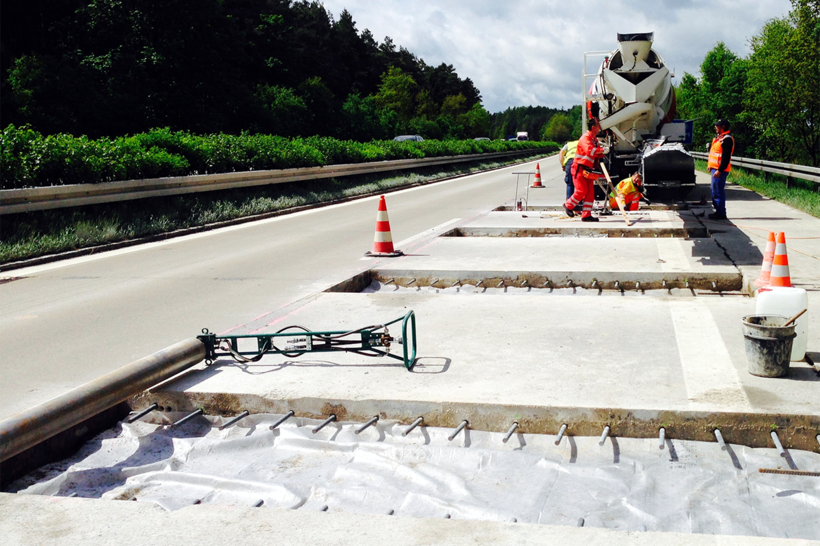Road traffic areas
Concept for Rehabilitation of Concrete Pavement Under Operation
The usage intensity of important transportation routes such as highways and major roads is increasing rapidly. Even special concrete traffic areas like roundabouts, bus stops, etc., are being subjected to greater stress. The condition of this infrastructure is showing an increasingly higher need for repair.
Road operators are increasingly looking for repair concepts that cause minimal disruption to traffic. For the renewal of asphalt roads, fast-setting asphalt surfaces have long been installed in night shifts. Thanks to rapid-hardening concrete and mortar, similar construction methods are now available for the repair of deteriorating concrete pavements.
For the actual concrete repair work on roadways, road junctions, or infrastructure structures, low-traffic time slots such as weekends, nights, or during the day between 10 AM and 4 PM are chosen. During this time, the concrete surface is repaired in sections on individual lanes, while traffic is diverted to the remaining lanes. During peak traffic times (weekday mornings and evenings), all lanes are fully available for traffic.
Construction Methods for Repairing Damage and Replacing Concrete Slabs
Common damages to asphalt bus stops, asphalt roundabouts, concrete highways, and concrete roads include deformations, edge breakages at the edges of concrete slabs, damaged pavement joints, or completely cracked slabs. Depending on the type and size of the damage, the following systems are suitable for repair:
Rapid-hardening concrete Concretum® Q-FLASH 2/20 or Q-CON
Rapid-hardening Mortar Concretum® Q-REP G
Construction Methods
1. Marking the damaged areas
2. Cutting around the damaged area, removing the damaged material, and determining the extent of the damage
3. If necessary: Laying reinforcement, connecting reinforcement/anchoring (this step is omitted when fibers are used as a substitute for steel reinforcement)
4. Cleaning and moistening the substrate
5. Mixing the rapid-hardening concrete / rapid-hardening mortar
6. Applying the rapid-hardening concrete / rapid-hardening mortar, surface finishing
7. Curing by briefly covering the surface
8. Strength testing and release for traffic
Advantages of Concretum® Q-FLASH 2/20 and Concretum® Q-REP G
- Easy and very flexible handling
- Processable like normal concrete and mortars
- Adjustable consistency (from self-compacting to stable)
- Can be applied manually or with machinery
- Usable in a temperature range of 5 – 33 °C
- Low shrinkage (< 0.2‰) and low heat of hydration to avoid cracks
- Purely cement-bound, without plastic additives
- High durability (low shrinkage, frost-resistant, highly impermeable)
Downloads:
Here you will find all Safety Data Sheets, Technical Data Sheets, Product Brochures, and Project Reports.



